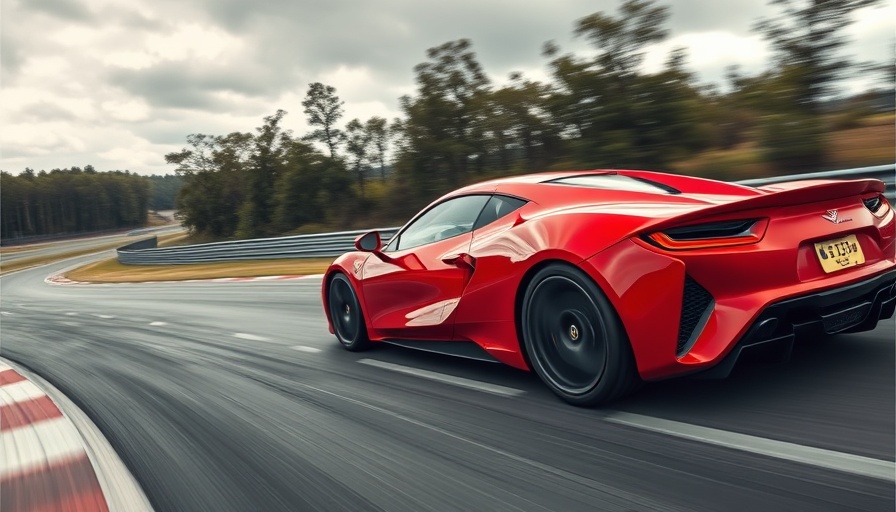
The Future of Electric Hypercars: YangWang U9 Xtreme Sets a New Bar
In a thrilling showcase of engineering prowess, the YangWang U9 Xtreme has not only taken the automotive world by storm but has also defined a new era for electric hypercars. With a jaw-dropping top speed of 308.4 mph, this electric marvel from BYD has overtaken the legendary Bugatti Chiron Super Sport 300+, which previously held the record at 304.8 mph. This remarkable feat was accomplished at the ATP Papenburg oval track in Germany, where German racer Marc Basseng piloted the U9 Xtreme through an exhilarating display of acceleration and speed.
Unpacking the Powertrain: What Makes the U9 Xtreme Unique?
The YangWang U9 Xtreme is powered by a state-of-the-art quad-motor powertrain, with each motor producing a peak of 744 horsepower, leading to a staggering total output of over 2959 horsepower. Such numbers are mind-boggling even for the electric hypercar segment, indicating just how far technology has come. Unlike traditional internal combustion engines, the U9 performs optimally thanks to a robust 1200-volt system, which ultimately allows for faster power delivery and higher performance levels. This impressive setup is complemented by modifications that enhance aerodynamics and reduce weight.
Why Electric Vehicles Are Dominating the Speed Ladder
As the automotive industry shifts increasingly towards electric vehicles (EVs), speed enthusiasts are beginning to recognize the significant advantages of electric powertrains. Advanced engineering enables these vehicles to achieve incredible power outputs and acceleration statistics that can eclipse many gas-powered counterparts. In fact, recent testing shows that two of the top three fastest cars at Car and Driver were electric, showcasing how EVs are no longer relegated to eco-friendly credentials but are now also synonymous with speed and power. With more manufacturers investing in electric technology, we can anticipate even more groundbreaking innovations in performance in the coming years.
Production Reality: Limited Edition and Exclusivity
While the YangWang U9 Xtreme is indeed classified as a production car, the exclusivity of just 30 units planned poses intriguing questions about accessibility for consumers. The bulk of hypercars traditionally boasts limited production runs, and this strategy often elevates their desirability among car collectors and enthusiasts. However, this leaves the average car enthusiast wondering when they too might get the chance to experience the thrill of driving such a remarkable vehicle. This limited production model speaks to the reality of the hypercar market, where the blend of power, innovation, and exclusivity generates a fervent desire mapped by the adrenaline of speed.
The Implications of Speed Records on the Automotive Industry
Establishing records like that of the YangWang U9 Xtreme has broader implications beyond just bragging rights. These milestones challenge existing manufacturers to innovate continuously. Companies like Bugatti, Lamborghini, and Ferrari must respond to this new competition on the speed front, urging them to push the boundaries of technology and performance. As electric motors and advanced battery technologies evolve further, faster production cars could become a norm, driving the future of automotive design.
What Lies Ahead for Electric Hypercars?
Looking towards the future, we can expect the role of electric hypercars to significantly influence public perception of electric vehicles as a whole. They symbolize the convergence of sustainability and extreme performance, traits that are essential in today’s automotive market. As consumers become increasingly demanding about performance, versatility, and environmental impact, manufacturers will be pushed to prioritize cutting-edge technologies and innovative designs. The YangWang U9 Xtreme serves as a beacon in this evolution of the automotive landscape.
As enthusiasts, industry professionals, or mere spectators, it's imperative to follow these developments in hypercars, as they paint a clear picture of how our automotive future might look. The question is, are you ready for the electrifying ride ahead?
 Add Row
Add Row  Add
Add 




Write A Comment